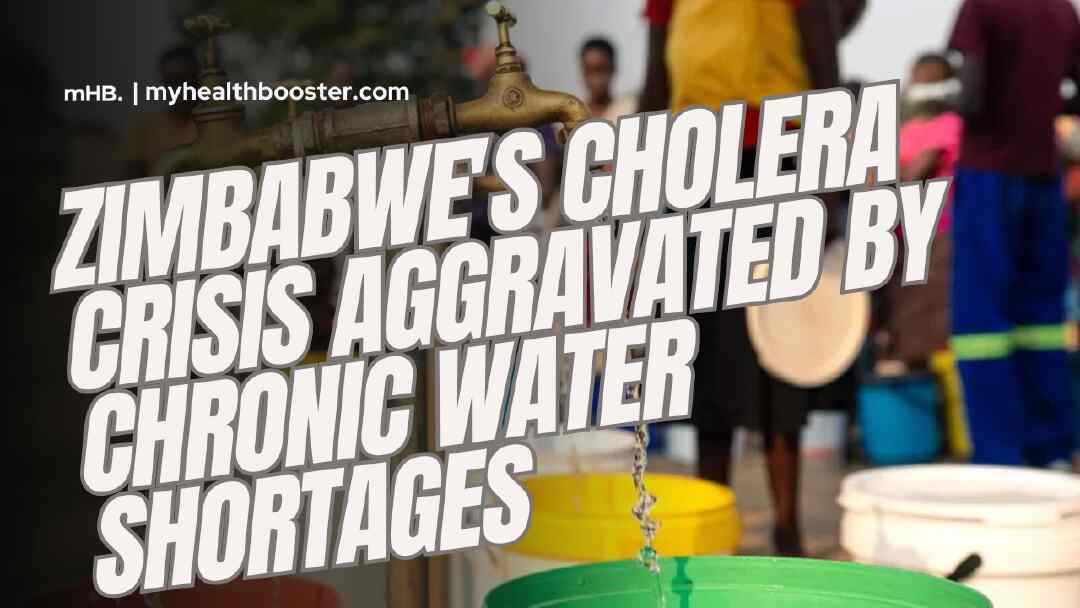Zimbabwe has been grappling with a prolonged cholera crisis, driven by a fundamental lack of clean water. The situation has caused immense suffering and uncertainty among the population, with dirty or scarce water becoming a daily struggle for many.
Cholera, a highly contagious diarrheal disease resulting from consuming food or water tainted with the bacterium Vibrio cholerae, thrives in crowded and unsanitary conditions. This lethal disease has turned into a recurrent threat to the nation, especially when considering its devastating outbreak in 2008-2009, which claimed over 4,000 lives.
During that period, the country faced not only a health crisis but also political and economic turmoil, marked by hyperinflation reaching a staggering 80 billion percent. Eventually, a power-sharing government emerged to tackle the challenges.
Today, Zimbabwe is grappling with rising inflation once again. Cholera, affecting all ten provinces, predominantly afflicts children, often left unattended due to their parents’ work commitments.
The current cholera outbreak began in February, and as of October, official statistics from the Health and Childcare Department document nearly 6,000 cases and approximately 123 suspected deaths.
In response, President Emmerson Mnangagwa, reelected in a disputed election in August, has pledged a nationwide borehole-drilling initiative. This program aims to establish solar-powered water points, primarily benefiting some 35,000 villages lacking access to clean drinking water.
In the capital, Harare, residents often endure prolonged periods without a consistent water supply from the Harare City Council. In Harare’s satellite township, Chitungwiza, more than 50 deaths occurred by the end of October – all due to cholera.
Despite its substantial size and population, Chitungwiza’s infrastructure and urban planning struggle to keep pace with its burgeoning populace, stemming from the ongoing migration from rural areas in search of employment.
Residents like Regai Chibanda, who commutes daily to central Harare for work, face dire circumstances. Many are forced to buy expensive bottled water, straining their finances.
This water crisis extends to other cities like Mutare, where cholera cases continue to rise. Residents there are grappling with limited access to basic necessities, particularly clean water.
Social media is replete with alerts about cholera. A resident from Bulawayo commented on the health ministry’s Facebook page, reflecting the dire situation: “How can we wash our hands? We don’t have running water in Bulawayo – for almost two weeks now.”
Cholera is relatively inexpensive to treat with rehydration salts and is easily preventable with access to clean water and proper sanitation facilities.
Despite recent declines in cholera cases, aid organization Mercy Corps warns that the situation remains challenging. Mildred Makore, the group’s country director, notes an alarming surge in cholera cases, particularly among women and children in Manicaland, mainly due to crowded water facilities and the reliance on unsafe wells and rivers for drinking water.
The World Health Organization’s emergencies director, Mike Ryan, considers cholera a symbol of poverty, social inequality, climate change, and conflict. It’s challenging to determine the extent of these issues linked to President Mnangagwa’s government. However, the reported cholera cases underline the inability or unwillingness to address the crisis by providing clean water.
In Harare’s southern suburbs, residents visibly struggle to access water. Wheelbarrows transport water from community centers and churches with boreholes, willing to share their water.
Critics highlight disparities in wealth as those who can afford to drill boreholes in their backyards are far better off than those who cannot. Moreover, city councils, often controlled by the opposition, point to inadequate government investments in water infrastructure.
Inefficient sewage management contributes to the problem as industrial waste and effluents continue to flow into rivers and streams that feed Lake Chivero, Harare’s primary water source. The high cost of replacing damaged pipes and purchasing water-treatment chemicals exacerbates the situation.
Efforts by more affluent areas, where residents arrange their waste collection, contrast sharply with the accumulation of trash on the streets elsewhere due to a lack of organized collections.
With the rainy season approaching, there’s concern that the dirt and filth accumulated over months will make cholera, which thrives in stagnant water, more challenging to eradicate.
Zimbabweans continue their daily struggle to keep their children away from tainted water sources, navigating the uncertainty of what is safe to drink and enduring the enduring battle against cholera.
